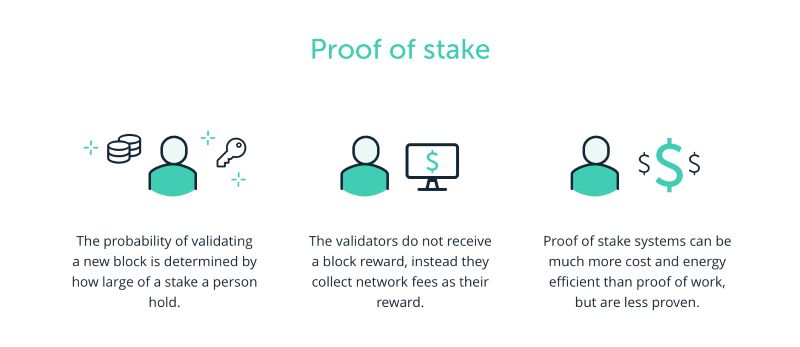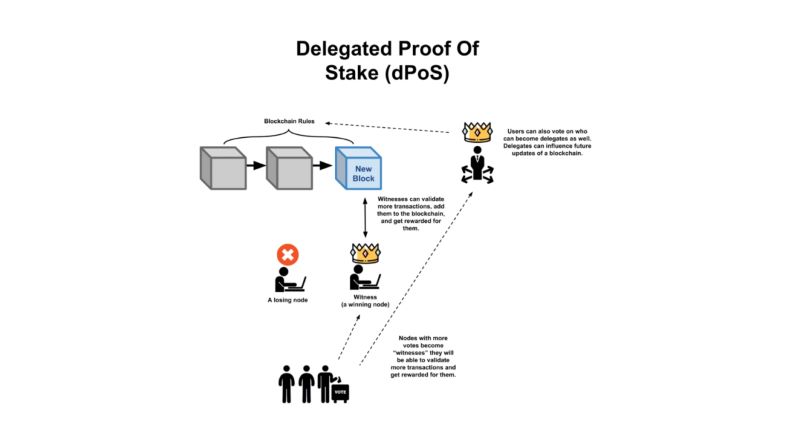Discover the cutting-edge world of Delegated Proof of Stake (DPoS), a revolutionary consensus mechanism optimizing blockchain performance and security. How does DPoS work, and why is it transforming decentralized systems? Dive in to explore its unique advantages and potential. Ready to enhance your blockchain solutions with DPoS? Explore more now!
Exploring consensus mechanisms in blockchain
The choice of consensus mechanism is crucial in defining the characteristics of a decentralized network. Consensus mechanisms determine how agreement is reached among nodes, ensuring the security, reliability, and integrity of transactions. Let’s delve into the intricacies of various consensus mechanisms, their unique features, and their impact on blockchain ecosystems.
Proof-of-Work (PoW): The Pioneer Mechanism
At the forefront of blockchain consensus mechanisms is Proof-of-Work (PoW). Known for its robust security through cryptographic puzzles, PoW involves miners competing to solve complex mathematical problems to validate transactions and add new blocks to a blockchain. While PoW has been instrumental in the success of cryptocurrencies like Bitcoin, its energy-intensive nature has sparked debates around sustainability.

Proof-of-Stake (PoS): A Greener Alternative
In response to the ecological concerns associated with PoW, Proof-of-Stake (PoS) emerged as a more eco-friendly alternative. PoS relies on validators who are chosen to create new blocks based on the amount of cryptocurrency they hold and are willing to “stake” as collateral. This mechanism not only reduces energy consumption but also aligns incentives with the security of the network.

Delegated Proof of Stake (DPoS): Empowering Democracy
Delegated Proof of Stake (DPoS) is an evolution of the PoS concept, where network users vote and elect delegates to validate the next block. Delegates, also known as witnesses or block producers, are chosen based on votes from token holders who pool their tokens into a staking pool. This democratic approach allows a more diverse group of participants to be involved in the validation process, enhancing scalability and efficiency by limiting the number of validators.

How does delegated Proof of Stake Work?
Delegated Proof of Stake (DPoS) is a consensus mechanism designed to enhance the efficiency and scalability of blockchain networks while making the validation process more democratic. Here’s a detailed breakdown of how DPoS operates:
Selection of Witnesses or Delegates
In DPoS, the consensus process involves a set number of witnesses or delegates elected by token holders through a voting mechanism. Token holders cast their votes based on the amount of cryptocurrency they hold, and the chosen delegates play a pivotal role in validating transactions and producing blocks. This voting system allows users to pool their tokens into a staking pool and link them to a particular delegate without physically transferring the tokens to another wallet.
Block Production
The elected delegates take turns proposing and validating blocks of transactions. Unlike traditional Proof-of-Work (PoW) mechanisms, where miners compete to solve complex puzzles, DPoS streamlines the block production process, making it more predictable and efficient. Each delegate is responsible for creating and verifying blocks, and the process is designed to be faster and less resource-intensive than PoW.
Block Verification
Once a witness proposes a block, it must be verified by a certain percentage of other witnesses before it is added to the blockchain. This verification process ensures agreement on the validity of transactions and maintains the integrity of the blockchain. If a witness fails to verify all transactions in the given time, the block is missed, and no reward is distributed to that witness. The reward is then added to the next witness who verifies the block.

Consensus Through Voting
Token holders participate in the consensus process by voting for their preferred delegates. The weight of a vote is often proportional to the number of tokens the voter holds. This aligns the interests of token holders with the security and reliability of the network. Delegates with a strong reputation are more likely to be elected as witnesses, as they are seen as more likely to genuinely protect the network.
Rotation of Delegates
DPoS introduces a rotation system where witnesses are periodically replaced or shuffled based on the voting results. This rotation prevents the centralization of power, enhances network security, and provides opportunities for a broader set of participants to play a role in block production. The number of witnesses is typically capped between 21 and 101, depending on the specific blockchain implementation.
Rewards and Penalties
Delegates are incentivized to act honestly and efficiently through rewards, commonly transaction fees or newly created cryptocurrency. Witnesses behaving maliciously or failing to fulfill their duties face penalties, including a temporary suspension from the delegate role. The rewards collected by the delegates are shared proportionally with their respective electors, based on the amount of tokens staked
Nominated Proof of Stake (NPoS) vs. DPoS
| Aspect | DPoS | NPoS |
| Delegate/Witness Election | Token holders elect delegates. | Token holders nominate validators. |
| Number of Delegates/Validators | Fixed number of elected delegates. | Number of nominated validators may vary. |
| Block Production Process | Delegates take turns proposing and validating blocks. | Nominated validators contribute to the block validation process. |
| Decentralization | Centralization concerns due to a limited number of delegates. | Aims for decentralization through a broader set of nominated validators. |
| Voting Mechanism | Token holders vote for their preferred delegates. | Token holders nominate validators they trust. |
| Flexibility | May have fewer options for participation as delegates are fixed. | Provides flexibility in the number of validators based on nominations. |
| Resistance to Collusion | Susceptible to collusion among a small group of delegates. | Strives to resist collusion through a larger and more diverse set of validators. |
| Governance Model | Employs a democratic governance model. | May vary in governance structures based on the blockchain implementation. |
| Examples | EOS (EOSIO) is an example of a DPoS blockchain. | Polkadot (Substrate) utilizes NPoS in its consensus mechanism. |
Blockchains That Use DPoS
As we reach the conclusion of today’s topic, it’s worth highlighting a few notable examples of DPoS blockchains.
EOS, developed by Block.one with Daniel Larimer as the architect, is an open-source DPoS blockchain. It provides educational resources and certifications for users interested in understanding its system. Pioneering the use of DPoS, EOS offers scalability with low latency and operates with a network of 21 delegates.

BitShares, founded in 2013 and created in 2014, is a decentralized platform for global payments. Co-founded by Daniel Larimer, it is managed by a decentralized autonomous company (DAC). Holders of the BitShares token (BTS) have decision-making authority over project advancements.
TRON, founded by Justin Sun, is a decentralized blockchain with a significant market cap. Utilizing DPoS, TRON aims to offer a variety of applications, including decentralized finance (DeFi) and streaming services, and operates with 27 delegates known as Super Representatives.
Delegated Proof of Stake (DPoS) stands out as a game-changer in blockchain technology, offering unparalleled efficiency and security. Its innovative approach is reshaping decentralized systems, providing a robust framework for future applications. Ready to revolutionize your blockchain solutions with DPoS?
Explore our comprehensive guide and start transforming your projects today Forex Trend News

